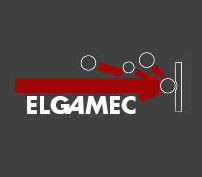- Contact 0870 350 7767
- |
- Advertise
Home > Elgamec Ltd > What is Sandblasting?
What is Sandblasting?
 News and PR from Elgamec Ltd - Published 01 August 2012
Elgamec Limited is one of the leading bussiness in the uk for all your metal finishing requirements.
Please contact us on 01252 518177 for further information
News and PR from Elgamec Ltd - Published 01 August 2012
Elgamec Limited is one of the leading bussiness in the uk for all your metal finishing requirements.
Please contact us on 01252 518177 for further information
The sandblasting technique refers to setting fine pieces of material in motion at high speeds in order to clean or chisel at a surface. As the name suggests, the process literally involved the use of sand, but this method was put to an end once it came to light that the inhalation of sand particles frequently resulted in a serious respiratory condition that led to a debilitating lung disease called silicosis. The modern-day alternatives to sandblasting include shot blasting and bead blasting.
The history of sandblasting
In the late 1800s, the air processor helped bring sandblasting into industrial use, with improvements being made to the process throughout the 20th century. By 1939, quartz, aluminium oxide and silicon carbide were used as mediums for sandblasting materials. Thereafter, softer media such as walnut shells and fruit stones were explored. The aircraft industry then began using glass beads and plastic abrasives for surface treatment.
Which medium is used is determined by the type of material to be sandblasted, what is to be removed and how the user wants the finished product to look. Aluminium oxide, steel shot, steel grit, crushed glass, glass beads, acrylic, polyester, melamine, pumice, corn cob, walnut shells and dry ice are just a few of the standard mediums used in sandblasting.
The automotive industry uses sandblasting routinely to remove paint and prepare metal surfaces for refinishing. It is used elsewhere for decorative finishing and removing debris. It is even used by denim companies to give the fashionable worn look!
Legality of sandblasting
Whilst performed in the right conditions, sandblasting is safe, but this cannot always be assured. Carried out with inadequate health and safety protections in place, workers can be exposed to hazardous crystalline silica and the threat of contracting serious or even fatal lung disorders, such as the aforementioned silicosis.
Accordingly, in the UK, The Health and Safety Executive (HSE) has issued a reminder that the use of sand containing silica for dry sand blasting of vehicles is prohibited.
As companies consider their duty of corporate responsibility, the likes of Levi Strauss have banned the use of sandblasting because of the realisation that they cannot completely control the actions of their supply chain.
For those seeking blasting services with a similar result to sandblasting, either shot blasting or bead blasting are the only viable choices.
The history of sandblasting
In the late 1800s, the air processor helped bring sandblasting into industrial use, with improvements being made to the process throughout the 20th century. By 1939, quartz, aluminium oxide and silicon carbide were used as mediums for sandblasting materials. Thereafter, softer media such as walnut shells and fruit stones were explored. The aircraft industry then began using glass beads and plastic abrasives for surface treatment.
Which medium is used is determined by the type of material to be sandblasted, what is to be removed and how the user wants the finished product to look. Aluminium oxide, steel shot, steel grit, crushed glass, glass beads, acrylic, polyester, melamine, pumice, corn cob, walnut shells and dry ice are just a few of the standard mediums used in sandblasting.
The automotive industry uses sandblasting routinely to remove paint and prepare metal surfaces for refinishing. It is used elsewhere for decorative finishing and removing debris. It is even used by denim companies to give the fashionable worn look!
Legality of sandblasting
Whilst performed in the right conditions, sandblasting is safe, but this cannot always be assured. Carried out with inadequate health and safety protections in place, workers can be exposed to hazardous crystalline silica and the threat of contracting serious or even fatal lung disorders, such as the aforementioned silicosis.
Accordingly, in the UK, The Health and Safety Executive (HSE) has issued a reminder that the use of sand containing silica for dry sand blasting of vehicles is prohibited.
As companies consider their duty of corporate responsibility, the likes of Levi Strauss have banned the use of sandblasting because of the realisation that they cannot completely control the actions of their supply chain.
For those seeking blasting services with a similar result to sandblasting, either shot blasting or bead blasting are the only viable choices.




